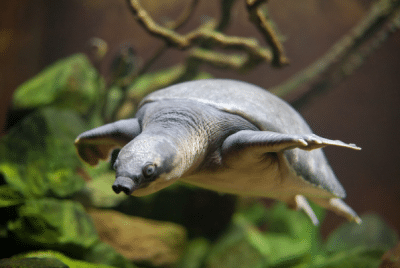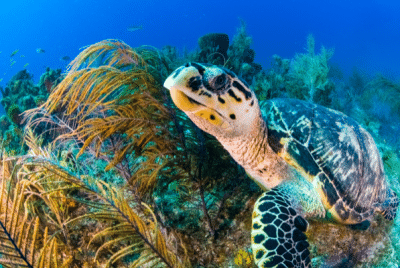Reeves Turtle: An Enthusiast’s Comprehensive Care Guide
Introduction to the Reeves Turtle
Mauremys reevesii, often referred to as the Chinese pond turtle, Reeves’ turtle, or the Chinese three-keeled pond turtle, belongs to the Geoemydidae family of turtles. This family was previously known as Bataguridae. The species originates from East Asia.
Brief History
This species, often referred to as the Chinese pond turtle or Chinese three-keeled pond turtle, has been a prominent part of East Asian ecosystems for centuries. Historically valued both for its aesthetic appeal and cultural significance, the Reeves turtle has seen varying levels of popularity in the pet trade due to its manageable size and docile nature.
Over the years, it has garnered attention from turtle enthusiasts and conservationists alike. Understanding its history helps us appreciate not just its role in natural habitats but also its evolution as a sought-after pet. By delving into the backstory of the Reeves turtle, one gains a deeper insight into the rich tapestry of turtle species and their enduring relationship with human civilizations.
Physical Characteristics
The Reeve’s turtle, scientifically known as Mauremys reevesii, boasts a myriad of distinctive physical traits that set it apart in the world of chelonians. Native to East Asia, this turtle is easily identifiable by its uniquely oval-shaped shell, which is accentuated with keel-like ridges, hence its alternative name, the Chinese three-keeled pond turtle.
Their carapace, or the top shell, ranges in shades from olive to brown, and occasionally even dark black, and typically has a length of 4 to 9 inches when fully matured. Their plastron, or underside, presents a lighter hue, often yellowish with some dark patches. Another captivating feature is their head; it’s moderately sized with vibrant eyes that have a gold to yellow iris, adding a touch of allure to their overall appearance. The Reeve’s turtle’s legs, while robust, are smooth-skinned and adept for both swimming in aquatic environments and maneuvering on land. Their tails are short and pointed, with males having a slightly longer tail than females.
A keen observer might also note the notable webbing between their toes, a testament to their adaptability to both aquatic and terrestrial habitats. In the world of pet enthusiasts and herpetologists, the physical characteristics of the Reeve’s turtle make it an appealing choice for observation and care.
Why Choose a Reeves Turtle as a Pet?
Low Maintenance Needs
The Reeves turtle stands out as an ideal pet for many enthusiasts, primarily because of its low maintenance requirements. First and foremost, this hardy species is notably resilient, which means it’s less prone to common health issues that plague other turtles. The size of the Reeves turtle is another significant advantage; they are compact, rarely growing beyond 9 inches, making them perfect for smaller living spaces and requiring less expansive habitats.
In terms of diet, they’re not particularly fussy eaters. While they thrive on a diverse diet of leafy greens, insects, and some aquatic animals, they’re adaptable and can easily adjust to commercially available turtle foods. Moreover, their docile temperament ensures they’re less likely to exhibit aggressive or unpredictable behavior, reducing the need for constant monitoring or specialized care techniques.
The habitat requirements are also quite straightforward. With a proper tank setup that includes clean water, a basking area, and a suitable water filter, the Reeve’s turtle can thrive with minimal fuss. To sum it up, if you’re in the market for a pet turtle and desire a species that offers a blend of charm, resilience, and ease of care, the Reeve’s turtle is an excellent choice that promises a fulfilling pet ownership experience without the high maintenance demands.
Amiable Nature
Often hailed as one of the most friendly turtle species, the Reeves turtle is increasingly becoming a favorite choice for pet enthusiasts around the world. Originating from East Asia, this charming reptile showcases a calm and gentle demeanor, making it a delightful companion for both beginners and seasoned turtle keepers.
Its affable personality means it’s relatively easier to handle and interact with compared to other turtle species. As more individuals delve into the world of reptile pets, the Reeves turtle’s affable nature truly shines through, making it a top contender in the realm of sought-after turtle species.
Setting Up Their Habitat
Tank Size and Setup
Choosing the right turtle tank size and setup for Reeves turtles is crucial for their overall well-being and longevity. The Reeves turtle, originating from East Asia, requires a habitat that mimics its natural environment. For a juvenile Reeves turtle, a tank of at least 20 gallons is recommended. However, as they grow, they’ll need more space. An adult Reeves turtle will thrive best in a tank that’s 40 gallons or larger.
When setting up their habitat, it’s essential to provide both a swimming area and a dry basking area. The basking spot is especially vital for their thermoregulation and digestion. The water depth should allow the turtle to swim freely and comfortably, usually about twice the length of the turtle’s shell. Implement a high-quality water filter to keep the water clean, as this reduces the risk of infections and promotes a healthier living environment.
For substrate, consider a mix of large, smooth pebbles which prevent ingestion. Lastly, ensure proper lighting with UVB rays to help with calcium absorption and vitamin D production. Remember, a spacious and well-equipped tank isn’t just about aesthetics; it plays a pivotal role in the turtle’s health, happiness, and life span. By investing in the right tank size and setup for your Reeves turtle, you’re ensuring a more enriching life for your reptilian friend.
Importance of a Dry Basking Area
As mentioned above, the basking area in a turtle tank plays a pivotal role, especially for species like the Reeves turtle. When you think of creating an ideal habitat for a Reeves turtle, ensuring a proper basking spot is essential. Why? Basking aids in the turtle’s digestion process and helps regulate its body temperature.
Furthermore, a well-maintained basking area can prevent numerous health issues, including shell rot, which often results from extended exposure to damp conditions. By providing a dry and warm spot, you’re mimicking the turtle’s natural environment in East Asia, where they often sun themselves on riverbanks. This natural behavior not only promotes healthy shell growth but also allows the turtle to absorb vital UV rays, which in turn helps in the synthesis of Vitamin D3. A deficiency in this vitamin can lead to metabolic bone disease, a common ailment in pet turtles.
As enthusiasts dive into the world of Reeves turtle care, understanding the significance of the basking area is paramount. Investing in a quality UVB lamp and ensuring the basking spot is easily accessible will go a long way in ensuring the well-being of your pet. In essence, a basking area isn’t just a luxury for a Reeves turtle—it’s a necessity. So, if you’re looking to give your turtle a home that aligns with its natural habitat, remember the importance of that sun-soaked spot in their tank.
Water Quality and Filtration
The water filtration system in a turtle tank is paramount, especially for species like the Reeves turtle. These turtles, native to East Asia, thrive in clean environments, and water quality can significantly impact their health and wellbeing. Unfiltered water can accumulate harmful bacteria and toxins, leading to a range of diseases or even affecting the turtle’s shell and skin condition.
Additionally, turtles are known to produce a fair amount of waste. A robust filtration system ensures that their habitat remains free from contaminants, offering a clearer view of the turtle and reducing foul odors. Furthermore, clean water enhances the natural behavior and vitality of the Reeves turtle, allowing them to swim and bask freely.
Investing in an efficient water filtration system isn’t just about aesthetics; it’s about ensuring the longevity and quality of life for your pet turtle. In essence, for the health and happiness of your Reeves turtle, prioritizing water filtration in their tank is non-negotiable.
Temperature Needs
Turtle lamp setups are crucial for the well-being of the Reeves turtle, often referred to as Mauremys reevesii or the Chinese pond turtle. When crafting an ideal environment for these unique aquatic reptiles, it’s paramount to integrate both UVA and UVB lighting. UVA stimulates social behaviors and appetite, ensuring your turtle remains active and healthy.
On the other hand, UVB aids in vitamin D3 synthesis, vital for proper shell and bone development. Many enthusiasts recommend a combination bulb or separate UVA and UVB bulbs for optimal benefits. The positioning of these lamps is equally essential. They should be placed above the turtle’s basking area, mimicking natural sunlight and providing a gradient of warmth. Regularly replace bulbs, typically every 6-12 months, to maintain their effectiveness.
When searching for the perfect turtle lamp setup for your Reeves turtle, consider brands that are vet-approved and have glowing reviews in the reptile community. A well-lit habitat not only ensures the health of your turtle but also showcases the beauty of these majestic East Asian natives in all their glory.
Diet and Nutrition
A well-fed turtle is a happy turtle!
The diet and nutrition of the Reeves turtle, also known as Mauremys reevesii, play a pivotal role in ensuring its health and longevity. Originating from East Asia, these turtles have specific dietary requirements that closely align with their natural habitat. They thrive on a varied diet, which is essential to provide them with all the necessary nutrients. Just like in humans, a diverse diet for the Reeves turtle helps prevent nutritional deficiencies and keeps the turtle engaged and interested in its food. Staples in their diet include leafy greens, aquatic plants, insects, and even small fish.
However, it’s crucial to balance the protein sources with adequate plant matter, as an overly protein-rich diet can lead to health issues. Variety in food not only ensures a balanced intake of vitamins and minerals but also replicates their natural feeding behavior in the wild. Feeding them the same food daily can be monotonous and may result in a lack of certain nutrients.
Introducing different food items in a rotation ensures they get a mix of calcium, phosphorus, and essential vitamins, promoting robust shell growth and overall vitality. In summary, for anyone keen on keeping a Reeves turtle, understanding the nuances of their diet and nutrition and emphasizing food variety is paramount for the turtle’s well-being.
Common Health Issues
Reeves turtles, a beloved species for many enthusiasts, are unfortunately not immune to health concerns. When considering the common health issues of Reeves turtles, it’s essential to stay vigilant and informed. A prevalent problem is respiratory infections, often indicated by wheezing or mucus discharge. A swift change in water temperature can be a contributing factor.
Another concern is shell rot, which is typically caused by fungal or bacterial infections and results in soft, discolored patches on the shell. This often emerges from unclean habitats, emphasizing the importance of consistent tank maintenance. Additionally, nutrient deficiencies, particularly Vitamin A, can lead to eye swelling and appetite loss.
Metabolic bone disease, resulting from inadequate UVB lighting or poor diet, is another issue leading to weakened shells and bone structures. Parasitic infections, commonly caused by flagellates or roundworms, manifest through lethargy and digestive disturbances.
Being knowledgeable about these health challenges and ensuring a well-maintained habitat, proper nutrition, and prompt veterinary care when needed, can ensure your Reeves turtle enjoys a healthy, robust life. Regular check-ups, keen observation, and a commitment to their well-being are crucial in mitigating these health risks.
Signs to Watch Out For
Reeves turtles, popular in the pet trade, require vigilant care to ensure their wellbeing. Recognizing the signs and symptoms of health issues in Reeves turtles is vital for any pet owner. Typical symptoms include lethargy, loss of appetite, and unusual spots or discoloration on their shells. Swollen eyes or a persistent refusal to bask can indicate potential respiratory or vitamin A deficiencies. Rapid breathing, bubbles from the nostrils, or wheezing might suggest respiratory infections.
Furthermore, a soft shell can be a red flag for Metabolic Bone Disease, resulting from inadequate UV exposure or calcium deficiency. Regularly observing your turtle’s behavior and seeking prompt veterinary advice when noting deviations can be pivotal. Keeping an eye on these health indicators ensures your Reeves turtle leads a vibrant and long life.
Final Tips for a Happy Turtle
Ensuring your Reeves turtle’s happiness involves a blend of optimal habitat conditions, a balanced diet, and regular interaction. As enthusiasts in turtle care, we emphasize the importance of a spacious tank for these creatures. Providing a clean environment with a well-filtered water system helps mimic their natural East Asian habitat.
Remember, a warm basking area is crucial for their well-being. Diversifying their diet with leafy greens, small fish, and occasional treats will keep them content and healthy. Regularly engaging with your turtle and monitoring its behavior can also be a signpost to its happiness.
Cleanliness is paramount; frequent tank cleanings can prevent illnesses and make your Reeves turtle thrive. Keeping these tips in mind ensures a content and lively turtle, enhancing your pet ownership experience.
Conclusion
Taking care of a Reeves turtle might seem daunting, but with love and the right knowledge, it’s an adventure worth diving into!
FAQs
- How big do Reeves turtles get?
They average around 4 to 9 inches, depending on factors like diet and care. - Can I put other fish with my turtle?
Generally, yes, but some turtles can get a tad too enthusiastic and treat them as food! - How often should I feed my turtle?
For juveniles, daily. Adults can be fed every other day. - What if my turtle doesn’t bask?
It might be too cold! Check the temperature settings. - Do they bite?
Rarely. If handled with care and respect, they’re gentle creatures.






